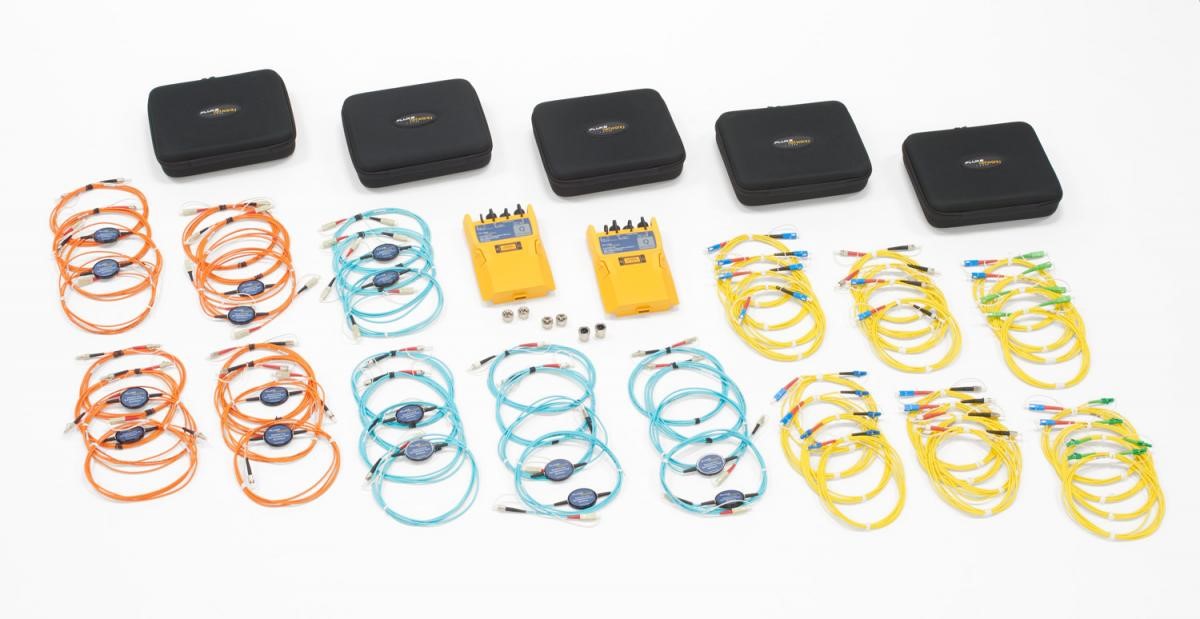101 Series: What’s Different About TRCs and How Do I Choose One?
June 29, 2017 / 101 learning
![]()
While it may look and feel like a fiber patch cord, Test Reference Cords, or TRCs for short, are not patch cords. There’s a little something different about these cords that are used for certifying fiber cabling systems to ANSI/TIA, ISO/IEC and IEEE standards.
As part of our Cable Testing 101 Series, let’s take a closer look at what’s different, why we need them, and how to choose one.
What’s Different?
TRCs are constructed of reference grade cable and terminated with reference grade connectors.
Reference grade cable features much tighter tolerances with a consistent core diameter and core/cladding concentricity (i.e., roundness) throughout the cable. Reference grade connectors also have much tighter tolerances than standard connectors – multimode reference connectors should have a mated loss of ≤ 0.10 dB and singlemode reference grade connectors should have a mated loss of
≤ 0.20 dB.
In contrast, a regular standard patch cord may have variances in core diameter and cable geometry with a typical connector loss that varies between 0.20 and 0.5 dB for multimode and between 0.3 and 1.0 dB for singlemode.
The performance of reference grade connectors is defined by ANSI/TIA-526-14-C and IEC 61280-4-2 industry standards, and the latest revision of the ANSI/TIA-568.3-D standard calls for even tighter test limits when mating reference-grade connectors to standard-grade connectors. Click here to read more.
Why Do I Need Them?
When it comes to testing fiber systems, it’s important to understand that connector loss refers to the loss of a mated pair of connectors – it’s actually impossible to measure a single connector. So to test the loss of the first connector, it must be mated to a similar, known quality connector. The reference-grade connector of the TRC won’t adversely impact the measurement -- regardless of the connector it’s mated to.
For example, let’s assume you are installing low loss LC connectors that have a have a typical loss of about 0.15 dB. If you were to test this connector by mating it to a connector that has a loss of greater than 0.15, you’ll end up with a pessimistic result. More importantly, if the connector you’re using to test has high loss, you could end up over your loss budget and fail what is actually a perfectly good link.
TRCs also are needed to measure the output power of your tester so they can be calibrated to 0 dB of loss. This is done by setting a reference with the TRC connected to the tester to take into account the loss of the TRC. You can think of this as placing a bowl on a scale and then calibrating the scale to zero to achieve an accurate weight reading for whatever you place in the bowl.
How do I Choose One?
First and foremost, you need to make sure that the TRC you choose matches the type of cable and connectors you’re testing. If your system has LC connectors, your TRC needs to have an LC connector. If the system uses multimode fiber, your TRC must be constructed of multimode fiber. If the system uses singlemode with angled polished connectors, the TRC must use singlemode with an angled polished connector. Pretty straight forward, right?
And while you might think you can use a standard patch cord or make your own TRC in the field, remember that the accuracy of your measurements depends on the quality of the TRC. Making TRCs in the field that meet the tight tolerances required is virtually impossible and should not be attempted.View the detailed specs for TRCs here.
TRCs also need to be kept clean and in good condition, and testing TRCs should be part of your standard operating procedure. To ensure that TRC have not degraded in performance, it’s recommended to test TRCs before every test cycle or at regular intervals. Testing TRCs after 288 fiber tests is a good rule of thumb, but in less than ideal environments where dust is an issue, shorter intervals may be required. Fluke Networks’ CertiFiber® Pro has an automated wizard that walks you through the process of testing and recording TRC values. Verifying your TRCs is the best way to make sure you can always achieve predictable, accurate test results and know that when a link fails, it’s not caused by poor TRCs.





